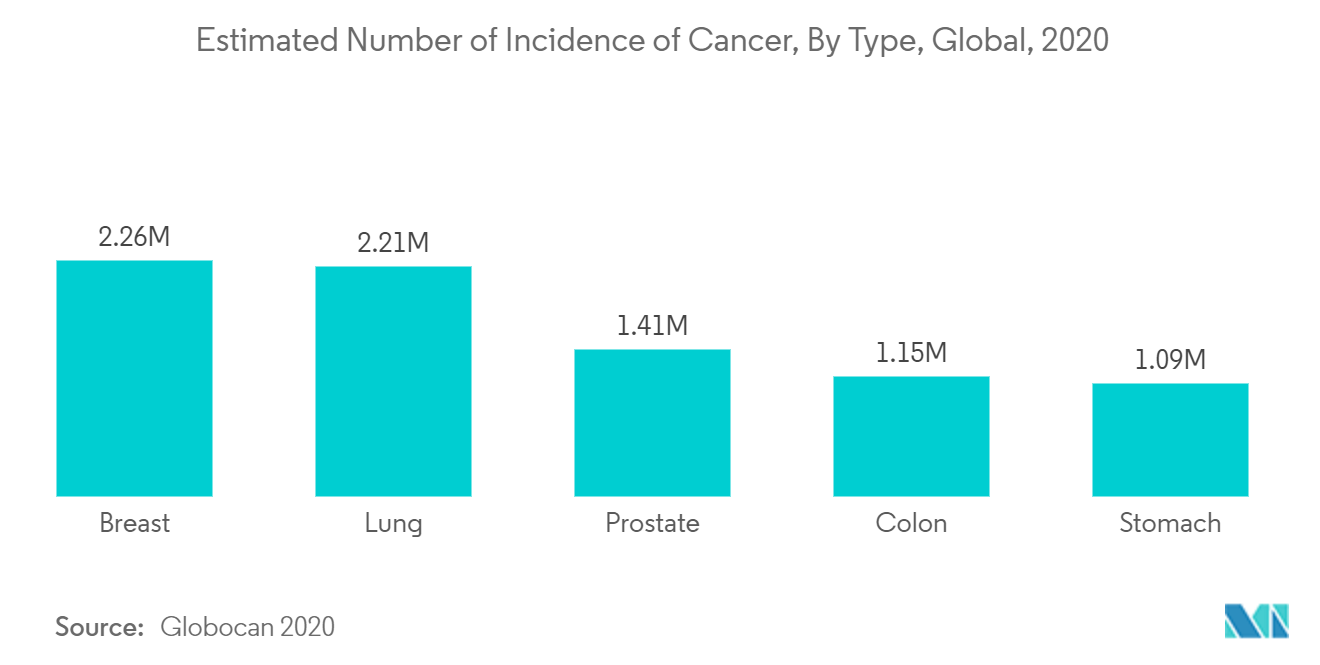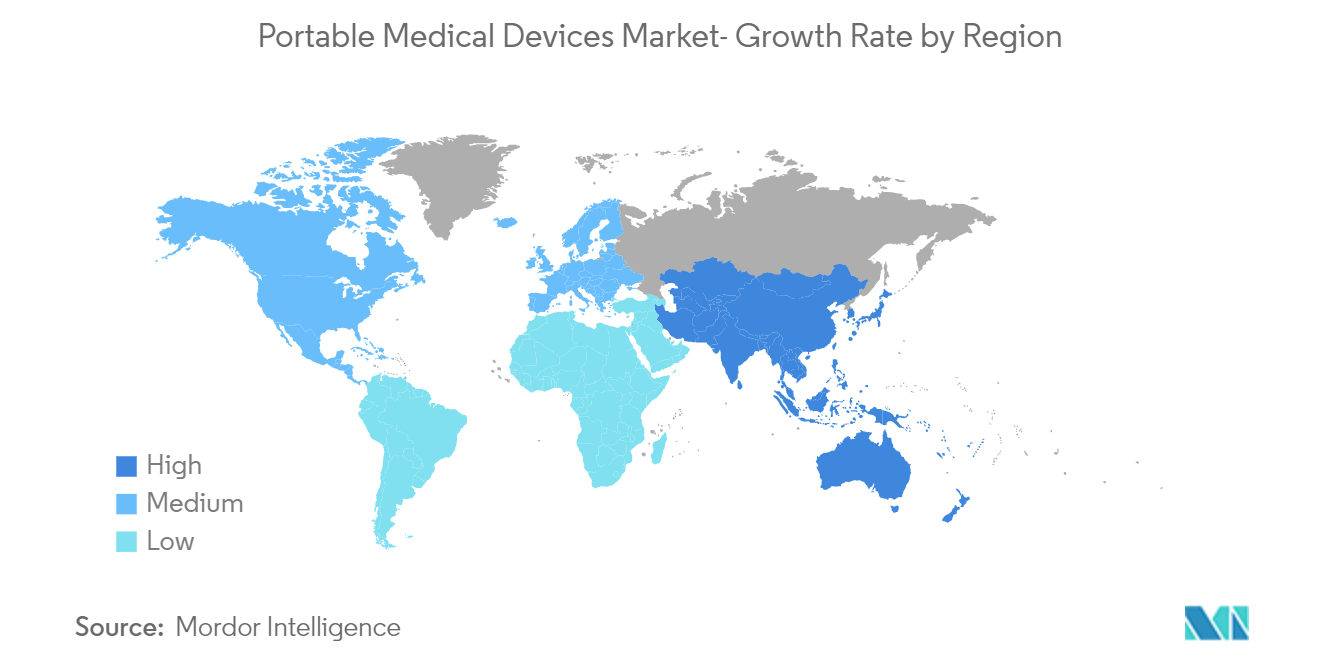Market Trends of Portable Medical Devices Industry
This section covers the major market trends shaping the Portable Medical Devices Market according to our research experts:
Diagnostic Imaging Segment Expected to Hold Significant Market Share Over the Forecast Period
The diagnostic imaging equipment segment covers a wide array of medical devices used for diagnostic purposes like ultrasound, X-ray, and MRI, among others. It has a vast range of applications in the oncology, orthopedic, gastro, and gynecological fields. The key factors bolstering the diagnostic imaging segment are the rising burden of chronic diseases (as these devices are used in diagnosing diseases) and technological advancements in diagnostic imaging. According to the American Cancer Society 2022, in the United States, around 1.9 million new cancer cases and 609,360 cancer-related deaths are anticipated to be identified in 2022. Thus, a rise in the incidence of cancer escalates the demand for diagnostics imaging devices and is expected to drive market growth.
Technological advancements and product launches in diagnostic imaging are driving the diagnostic imaging equipment segment globally. For instance, in July 2022, Fujifilm Europe launched a new flexible, hybrid C-arm and portable X-ray machine. The device, called FDR Cross, is designed to offer high-quality fluoroscopic and static X-ray images during surgery and other medical procedures.
Additionally, in January 2022, ClariusMobile Health launched a third-generation product line of high-performance handheld wireless ultrasound scanners for all medical specialists. Similarly, in December 2021, EagleViewultrasound introduced its wireless portable ultrasound device, which provides much freedom for ultrasound imaging and makes the point-of-care solution more affordable. Thus, the abovementioned factors are expected to drive the segment over the forecast period.

North America Leading the Portable Medical Devices Market and Expected to do the Same Over the Forecast Period
North America is estimated to hold the largest value share in the portable medical devices market. High adoption of technologically advanced devices, high treatment rates, and supportive government initiatives for early diagnosis of diseases are among the few factors driving the market. An example of government initiatives in the area of imaging is the Cancer Imaging Program initiated by the National Cancer Institute. This program is aimed at promoting and supporting cancer-related basic, clinical, and translational research in imaging and technology. It is also aimed at developing, integrating, and applying these imaging innovations for the clinical management of cancer.
High adoption of monitoring, diagnostic, and therapeutic systems for disease management is anticipated to bode well for regional growth. The growing geriatric population and a subsequently rising burden of chronic diseases are also propelling the market. According to the Centers for Disease Control and Prevention (CDC), in July 2022, 12.1 million Americans were expected to have atrial fibrillation (AFib) by the year 2030. Thus, the increasing prevalence of AFib is expected to increase market growth as these patients require constant monitoring.
In addition, as per data published by the National Cancer Institute, in 2021, there were around 1,806,590 new cases of cancer diagnosed in the United States, and 606,520 people died from the disease. Therefore, due to the rising burden of chronic diseases such as cancer and cardiovascular diseases in the country, the demand for portable medical devices is expected to increase and subsequently drive the market.
Moreover, the launch of technologically advanced products in the country is expected to further drive market growth. For instance, in March 2022, MobvoiInc., in partnership with the global health tech company CardieX, launched its first heart health monitoring smartwatch, the TicWatchGTH Pro. The watch also utilizes sensors to provide insights into general and arterial health through high-fidelity sensing points that track both from the wrist and through the finger. Additionally, in September 2021, GE Healthcare launched the AMX Navigate, a new portable, digital X-ray system designed with a first-of-its-kind power-assisted Free Motion telescoping column that aims to reduce lift force by up to 70% and decrease technologist injury. Thus, due to the abovementioned factors, the market studied is expected to grow significantly in the country.


